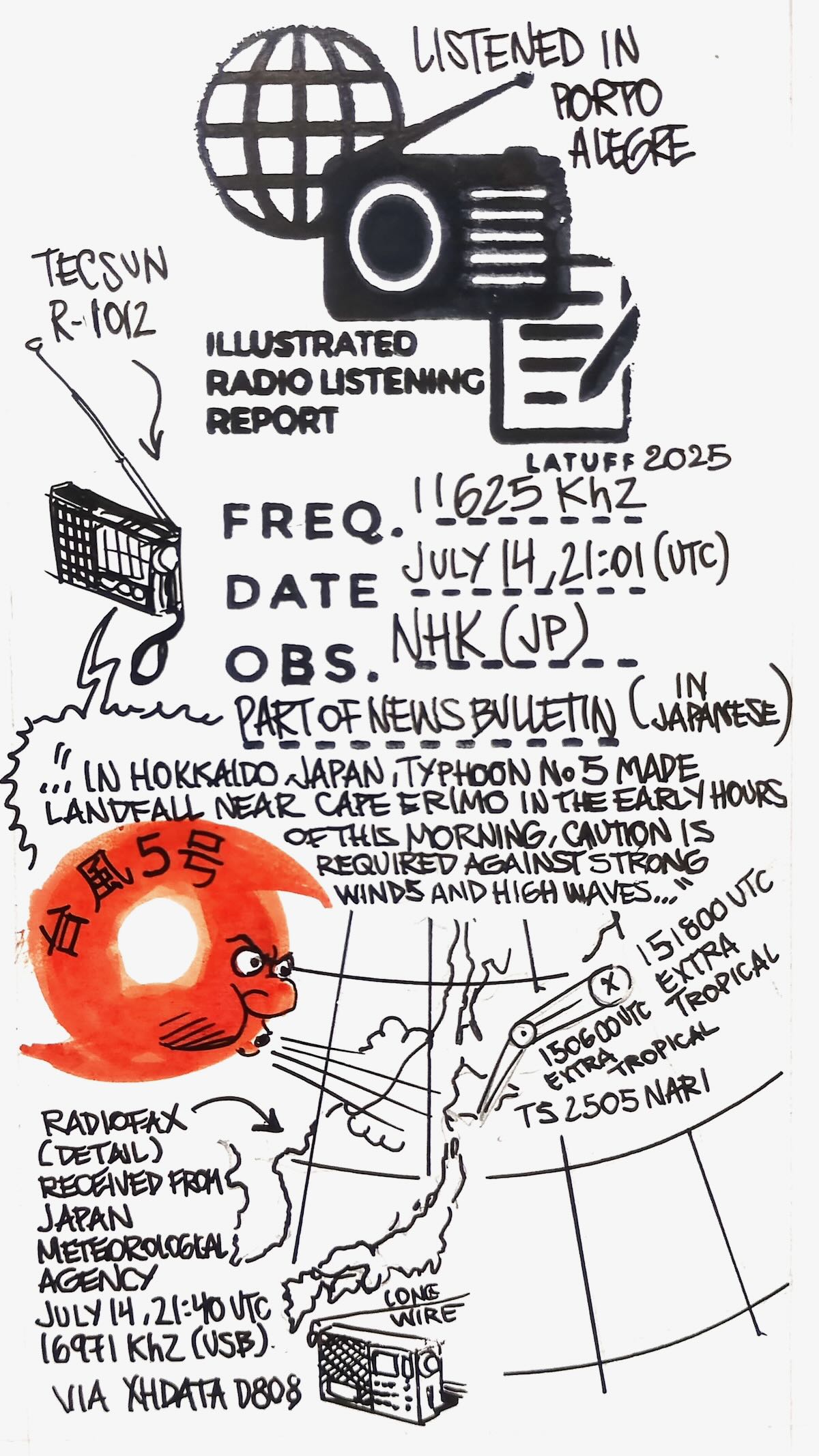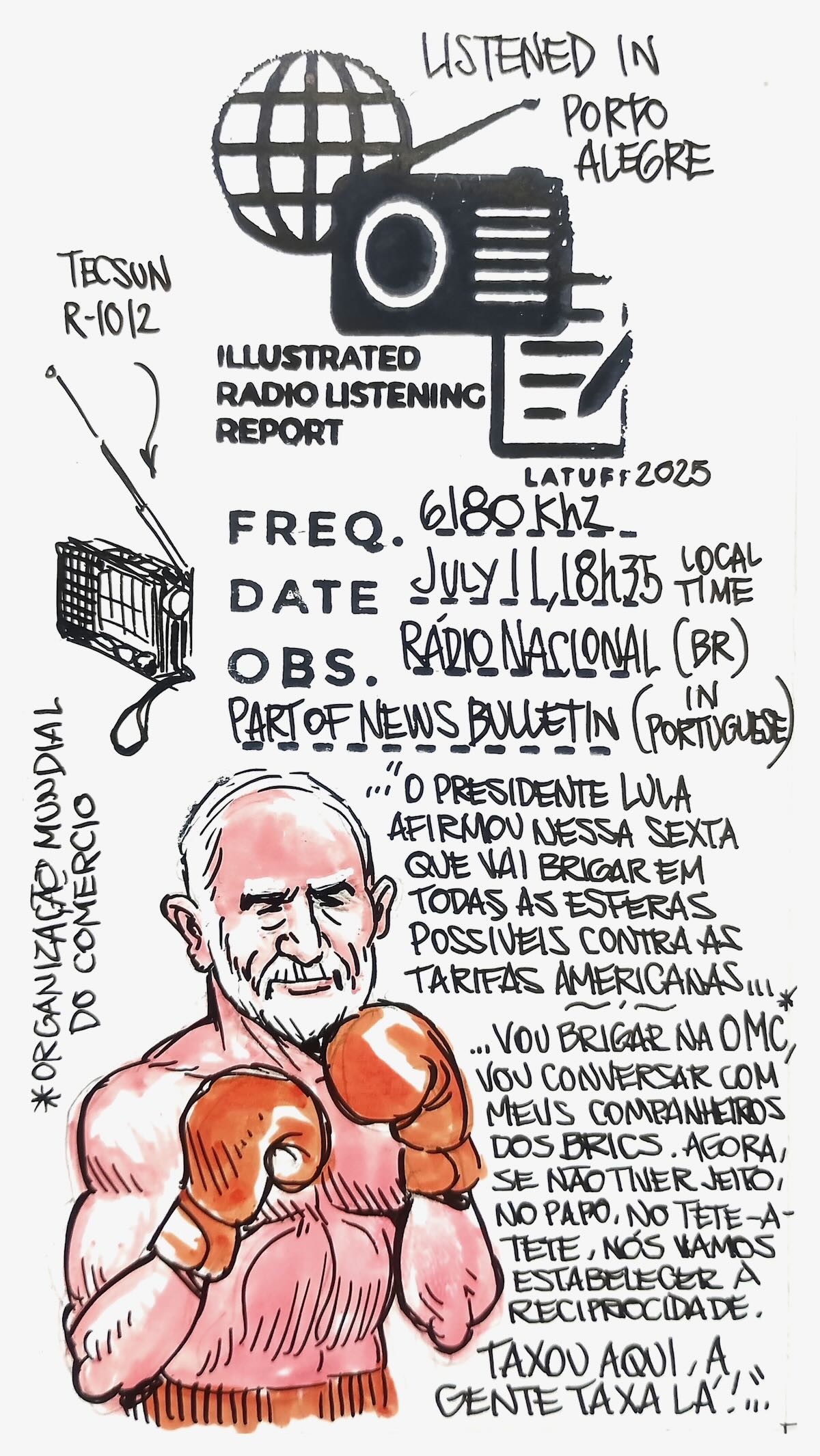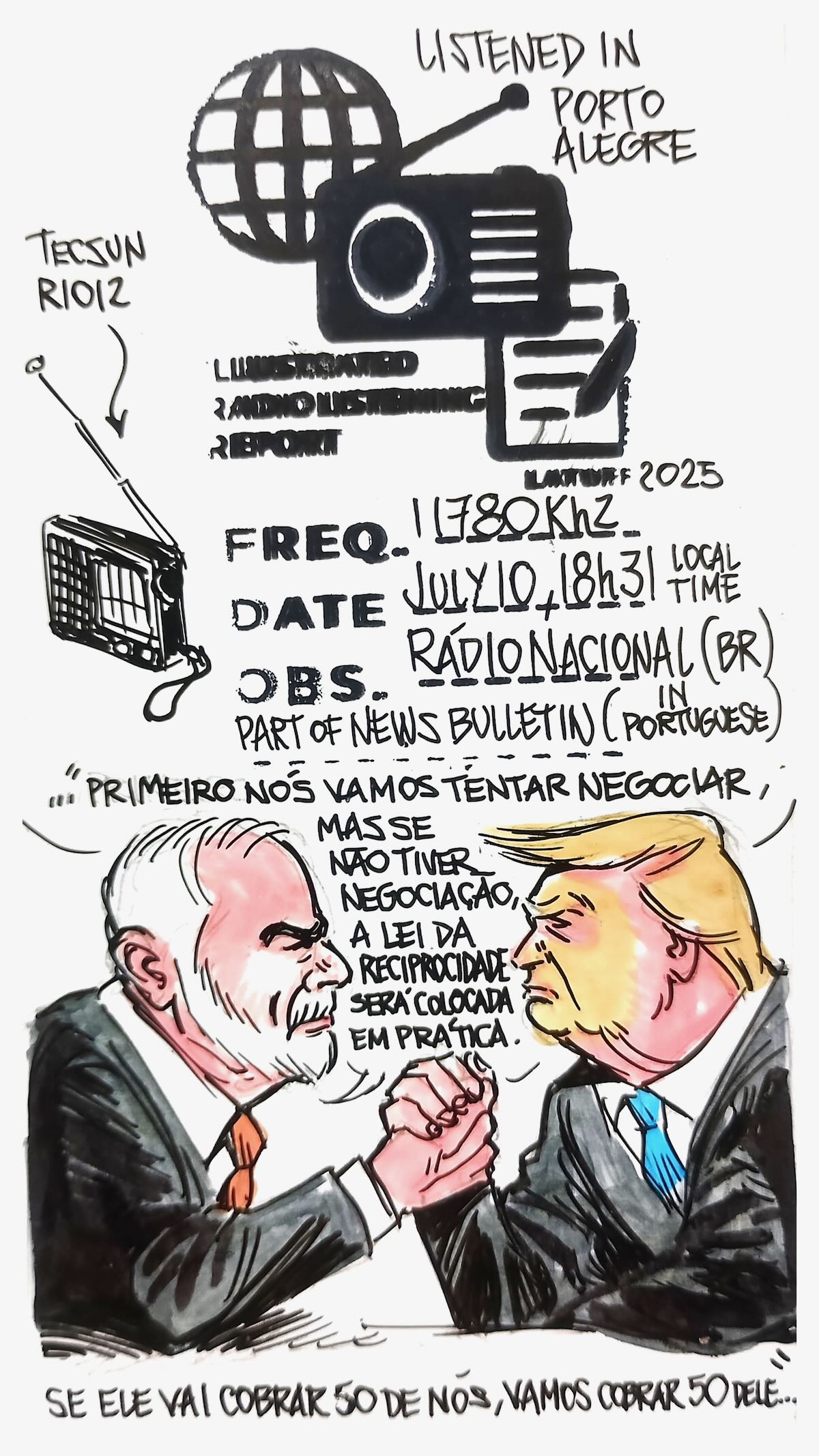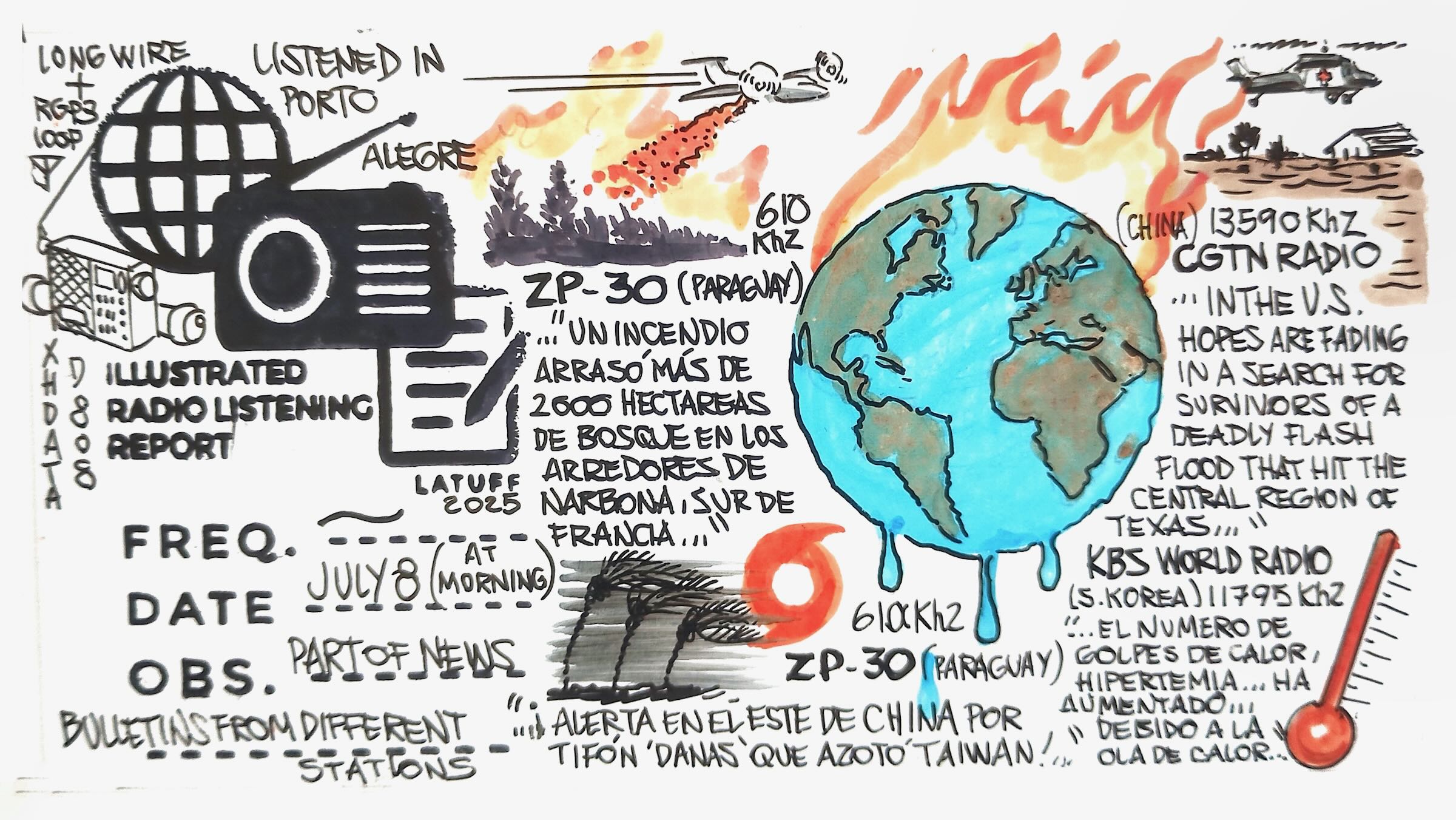Many thanks to SWLing Post contributor and noted political cartoonist, Carlos Latuff, who shares the following illustrated radio listening report of a recent NHK broadcast.
Carlos notes:
Typhoon No. 5 (Nari) has made landfall in Hokkaido: NHK+Japan Meteorological Agency (radiofax)
Typhoon No. 5 (Nari) has made landfall in Hokkaido, Japan. Part of NHK news bulletin (in Japanese), 11625kHz + radiofax (partial) from Japan Meteorological Agency.








